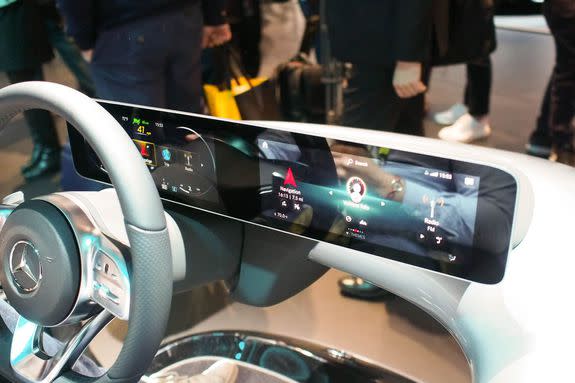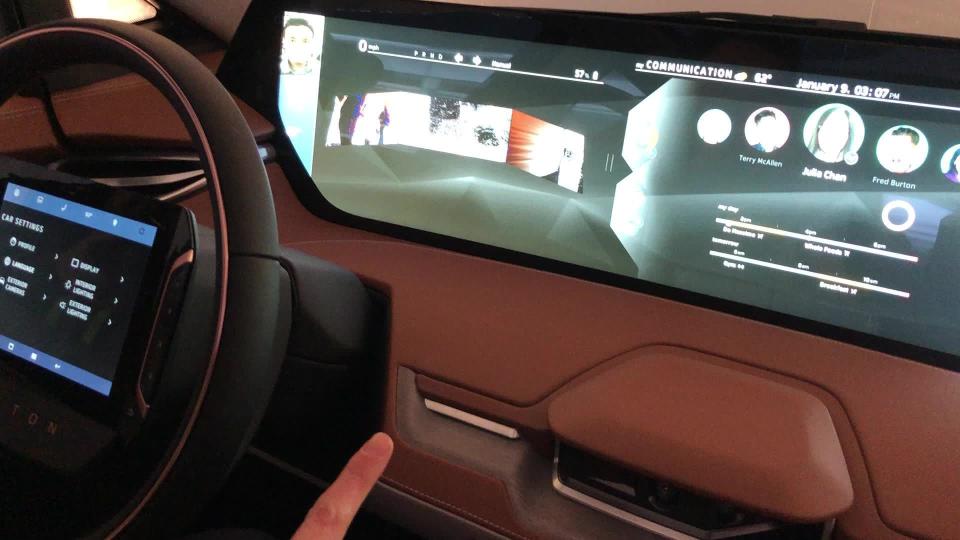What the next generation of car dashboards will be like

The future of the car is driverless. Everyone knows this, and it was on full display at CES 2018, with a host of companies showing off why their particular flavor of self-driving was better than the company just a few feet over on the Las Vegas Convention Center parking lot.
The thing is, true self-driving cars — ones that can drive on any street and take you door to door — are likely still several years away. The not as revolutionary but more immediate trend in automotive technology that will change the way we drive in the next few years are connected cars.
SEE ALSO: 3 security issues facing self-driving cars
The next generation of cars will have always-on mobile connections and internal sensors, and that's leading automakers to re-imagine in-car experiences with touchscreens, voice interactions, and even gesture control. It sounds impressive and usually looks really sleek, but, based on what I tried out at CES, the dashboards of the future may not be what we want, or even be a very good experience overall.
The upgrade car owners will feel the soonest is in tech that's already commonplace on dashboards: touch. However, the touchscreens of tomorrow will be a leap ahead of the lag-ridden resistive touchscreens that are the norm in cars today (touch-first UIs like Tesla's notwithstanding): They're going to be much more closer to the capacitive multitouch experiences that we're used to on iPhones and iPads.
The dashboard as an iPad
The poster child for these is the 2018 Mercedes A-Class. Shipping very soon, the new car features a 10-inch touchscreen that's big but not too big, and as responsive as a smartphone. The UI has large iconography that's designed not to distract, and it's very customizable: You can even set it to display virtually nothing while you drive (which would be my preference).

Image: Pete Pachal/Mashable
Dashboards like the A-Class's make me uneasy, though, since they ditch most hard buttons altogether. This isn't a trend I'm a fan of, mostly because I find keeping your eyes on the road is easier if you can find your way around a dashboard with touch. Of course, that's why the A-Class also features conversational voice interactions, letting you just talk to your car to do things like play music or turn on the AC. More on that in a minute.

As far as big-screen dashboards go, the most outlandish one I saw was on Byton's SUV concept. The 40-inch(!) display is recessed, and it stretches from one side of the windshield to the other. It's not a touchscreen; instead the driver controls everything with buttons and touchscreen on the steering wheel.
While the car's stopped, though, the Byton activates a new kind of interaction: gestures. You can point and select things on the screen with your fingers, just like you'd do with Microsoft Kinect. That's a UI experience I've never found satisfying, and if it were used to control car functions it would be downright dangerous, but thankfully Byton was wise enough to deactivate gesture control while the car is in motion.
Look whose car is talking
Forget touching and pointing at screens, though; in the end, what we really want is to simply talk to our cars and have them do things for us. Basically, we want Alexa in the car.
A number of automakers have already announced they're working on exactly that, but CES saw them grow in rank, including Toyota, the world's largest car manufacturer. Panasonic announced it would work to bring both Alexa and Google Assistant to the infotainment systems it provides to carmakers.
At least a few auto manufacturers, however, think they can craft a better voice experience for their own cars, and one of their demos — the Mercedes A-Class I mentioned above — has me almost convinced. The in-car assistant was great at parsing natural language and inferring intent. Instead of saying clinical instructions like, "Mercedes, lower the cabin temperature by 2 degrees," you can just say, "Mercedes, it's hot," and it'll perform the same action. Cuing up specific songs, genres, and radio stations was just as easy and natural.
I also got a chance to sample the voice experience in the latest Toyota Camry XLE, which uses voice-recognition tech from a company called Voicebox. Again, it could interpret natural commands like, "I really need to call Sam."

Image: Pete Pachal/Masahble
The promise of all these systems is that, as cars get connected, the experience can be updated anytime. Tesla has been offering over-the-air software updates for a long time, and other automakers have been following suit. When 5G becomes a reality, the trend will only accelerate.
Many of these interfaces are bumpy. When I was in the Mercedes it had a hard time understanding the word "jazz." The Byton's gesture control looks like a disaster. And there are still questions about security and privacy to be worked out. But the in-car experience is evolving, and riding a car in the 2020s will likely feel a bit empty without Alexa, Google, or one of their chatty cousins as a passenger. Hope you weren't too in love with those buttons.
WATCH: This self-driving pod is Toyota's new concept vehicle


 Yahoo Finance
Yahoo Finance 